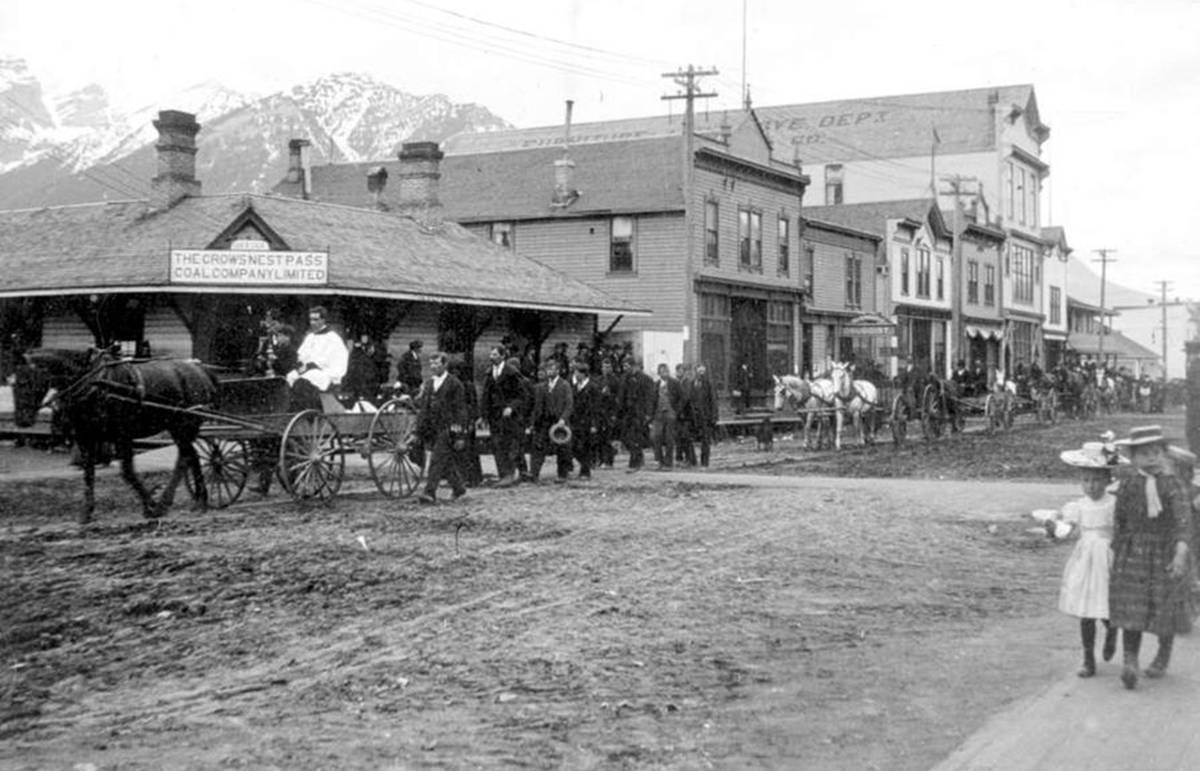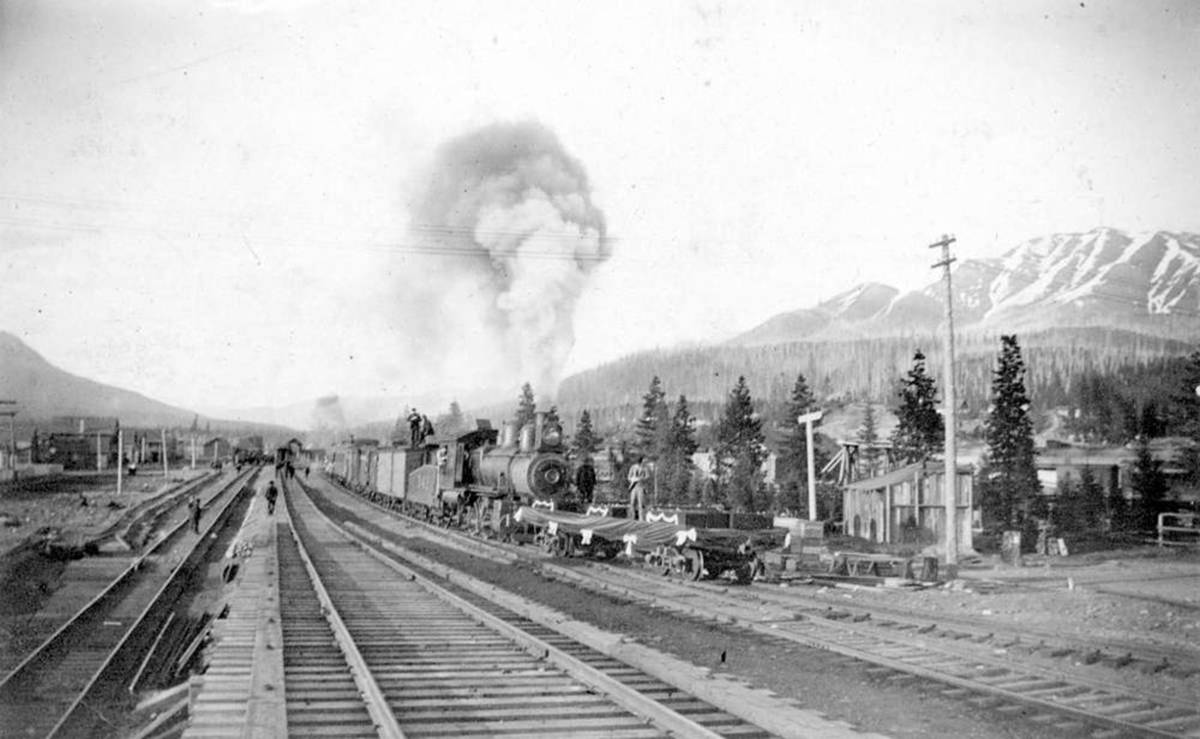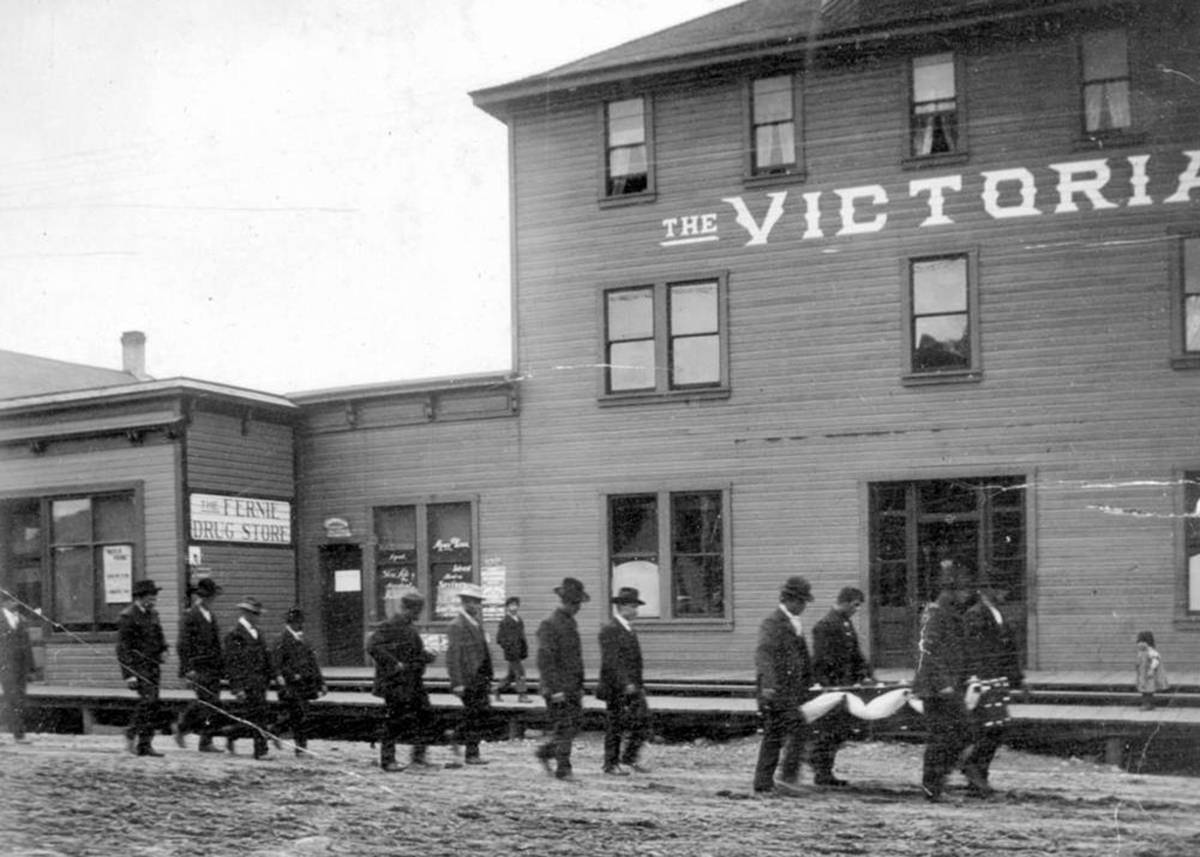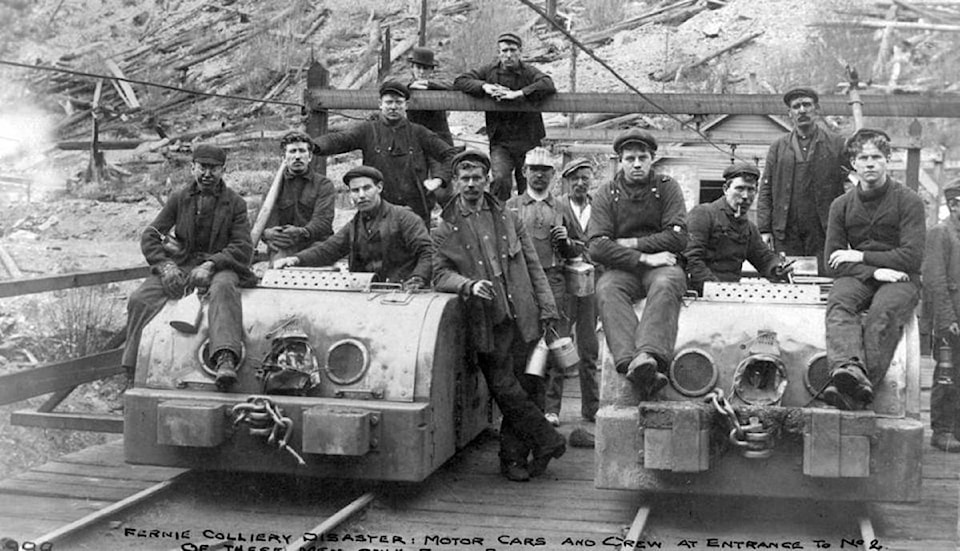Cory Dvorak is a seventh generation Elk Valley resident whose great-grandmother grew up in Coal Creek.
She was born in 1919, long after Canada’s third worst mining disaster occurred only a few kilometres from downtown Fernie, but with five generations of coal miners in the family, the mines had always been important to her.
“I’d go by her house quite often on the way home from school and we’d play games, visit with other family, and she’d always fill me in on who came to visit that week to ask questions about Coal Creek and Fernie,” said Dvorak. “She was always proud of our coal mining heritage, and quite interested in learning as much as she could of the workings of the mines. I wasn’t interested in anything more than our own family history back then, but she must have rubbed off a bit on me in the long run.”
She must have, as Dvorak has been conducting in depth research into the 1902 Coal Creek disaster and its profound effects on the region.
Now an archivist at the Fernie Museum, Dvorak believes there are inaccuracies in the disaster’s official casualty list as he works to make sure its victims are remembered.
After looking at various mine reports, newspaper articles and stories, Dvorak believes the inaccuracies come from variations in the way the mostly immigrant workforce spelled their names.
“Lots of the non-english speaking miners used anglicized names, some weren’t written correctly because of the language barrier between their families and those writing the reports, some of these reports gave their proper names, and some just gave the anglicized version,” he said. “A few of the men weren’t even found until a year or so later after the explosion happened and after the final reports came out.”
He continued his research using data from the Lost Souls Society in Fernie, articles in the The Free Press, the Fernie Museum and other archives throughout B.C. and Alberta.
He combined what he found on UBC’s Open Collection online database with the death records he could find from the province to come up with a base list to begin researching. He used online resources to go through the names one by one to try and narrow down the list and correct the spellings of the victims’ names.
According to official records, 128 men were killed in the May 22, 1902 explosion that ripped through the No. 2 and 3 mines in the Coal Creek valley but Dvorak’s revised list shows as many as 135 men could have been killed in the explosion.
His list contains names, dates places of burial and other information. The youngest victim was named William Robinson and was only 13 years old when he died. One family – the Federicos – lost five men.
Prepared with his research, Dvorak suggested the museum should do something to mark the 115th anniversary of the disaster.
The museum agreed and on May 22, about a dozen residents gathered in front of Fernie’s city hall. Father David John of Holy Family Church and Reverend Andrea Brennan of the Anglican Church led the assembly in prayer and wreaths were laid.
The museum is planning on turning this into an annual event to honour all miners lost in the Elk Valley.
Dvorak said lots of the mines up Coal Creek were known for being dangerous. They had what is known as a very “wet” coal, he said, which leads to gas build up in the mines. Though they had fan houses to help ventilation, they were not always adequate.
The explosion originated at the face of the No. 2 mine where miners Dougal Milroy and James Muir were working. From the reports, there was a blower (gas venting from the rock) in the roof above.
The gas alone wasn’t enough to spark an explosion, but once it combined with the already dusty conditions, a double shift worth of dust and inadequate watering, it became “a ticking time-bomb,” said Dvorak.
The Free Press was on scene covering the disaster.
According to the May 24, 1902 issue, “The first inclination that anything unusual had occurred was a volume of smoke, gas and dust shooting a thousand feet into the air from the fan house of No. 2. Word was immediately sent to Fernie and in exactly twelve minutes time three doctors and two coach loads of people were on the scene and the work of rescue commenced.”
Many of the miners were found with matches and tobacco in their pockets. James Muir was found with both.
“You’d think they wouldn’t dream of smoking down in the mines because of the dangers of gas, but it was somewhat of a common practice,” said Dvorak. “Even the occasional boss would smoke on his way into the mines for inspections. The workers would even light the “blowers” of gas to keep warm. I think, and this is just my personal opinion, that the explosion was caused when a miner went to light his tobacco.”
Most of the men didn’t die from the actual explosion. It was either the concussive blow from the pressure of the explosion, or the afterdamp, which is a mixture of toxic gases left from when an explosion burns up all the oxygen, that killed them.
The bodies that weren’t identified or buried right away were brought in on the train to Fernie and kept at the Church of England, which is about where Scotiabank is today. Because of the volume, embalming wasn’t possible. Those that weren’t claimed within a few days were buried in unmarked graves at mass funerals.
Dvorak said that after the disaster a police officer named Constable Stevens callously said that he wished a few hundred more men had been killed.
When word got around, about 500 residents and miners organized and went to the jail to run Constable Stevens out of town. They stripped him of his badge and uniform and forced him onto the train. Miners were waiting at the station in Michel as well to make sure he was carried out of the valley.
The May 26, 1902 issue of The Free Press states, “The action of the citizens of Fernie last evening in seeing that Provincial Constable Stevens left the city forthwith was the chief topic on the streets today. And while all expressed regret that it had been found necessary to cause a police officer to go, and to see that he did not stand upon the ceremony of his going, yet there were none who condemned the miners and their sympathizers for insisting upon the course which they took.”
The Crow’s Nest Coal Company paid for the funerals and the widowed families were given free rent in company houses. Many had to leave the area because all their wage-earners had perished, some remarried, lots remained overseas as they hadn’t even come to join their sons, husbands or fathers yet, said Dvorak.
The shops in Coal Creek and Fernie lost much of their business. Many who survived weren’t on shift and others were out of jobs for almost a year while the mine was repaired and the bodies recovered.
Production for the company plummeted. Shortly after the mines re-opened in 1903, the miners went on strike because of an added half hour to the work shift.
The town of Coal Creek was located approximately eight kilometres east of Fernie at the base of Castle Mountain and is now a ghost town.
Most of its residents left in the 1950s when its mine closed. Some of its buildings were dismantled and salvaged. Parts of the town remain but most has been overtaken by forest.
Dvorak said the people who lived in Coal Creek are getting harder and harder to find but they and their families are still in the area.
“They built this town, and neither Coal Creek or those men should be forgotten. If it wasn’t for them, Fernie wouldn’t be the close-knit town it is today,” he said.
Though it was a harrowing event, Dvorak said the disaster should be remembered more for the solidarity it inspired than the horror.
“This is from one of my grandma’s interviews, and I think it sums it up perfectly,” he said.
“I don’t think it mattered whether you liked one another or not either. This is a very odd thing to say, isn’t it? We might have said, “Well who wants to play with her!?” And yet there’s always that memory, and I think it’s because of the life we led. That it could have been my dad that was in the mine. It could have been me that was waiting there at the bottom of the hill. But it was your dad. But we knew what you felt like. We knew the fear and the hope and the awful feeling that mine is safe and yours isn’t. You have no idea what kind of feeling that is. To be happy for yourself, and to be so sad for your neighbour. But it brings a closeness to people.”



